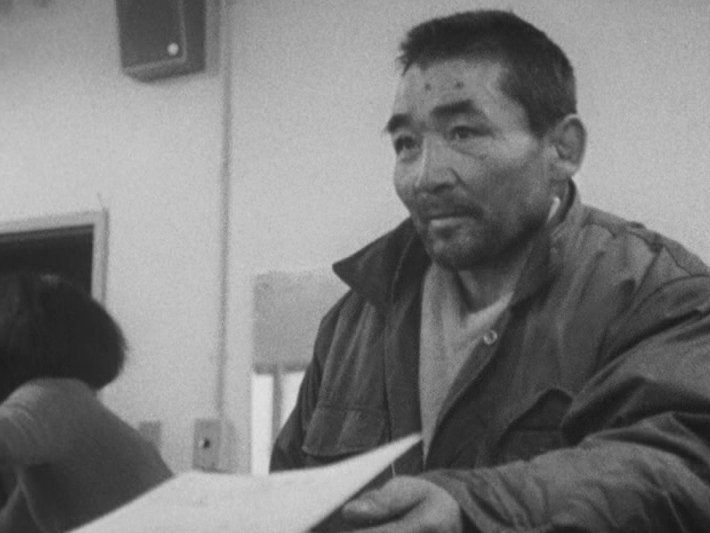
“In the production diary from the editing, there were many discussions about life and the ethics of filming people who are facing death. For example, on January 2, 1975, there was such a conversation between Tamura and Ogawa. The cinematographer wonders, ‘For example, say someone knows he’s going to die soon. How would you shoot it? In the end, we wouldn’t shoot, would we?’ Ogawa replies, ‘If he’s trying hard to live, we can film that.’ ‘There’s only one way we can shoot someone who knows he’s going to die,’ responded Tamura, ‘That’s when he says, ‘Please shoot me.’ Several weeks later, someone wrote,
People do everything they can to live. Even when it’s difficult, they’ve got to live. That’s why no one can be disinterested in death. Furthermore, when there are meaningless deaths one after another – the anger also runs deep. Regret. Resentment. Understanding ‘death’ means the same as understanding ‘life.’ ‘That’s why we have to live!’ We want our camera to evidence this.
In the end, their film does give evidence to the drive to life, beginning with its title. It was originally entitled simply Kotobuki, which ironically happens to be the character for ‘happiness.’ However, they came up with Dokkoi! Ningenbushi during the editing. Dokkoi! is a call, something on the order of ‘Oof!’ People utter it when they summon all their energies for something requiring great physical effort. Ningenbushi would translate along the lines of ‘Song(s) for Humanity,’ the word bushi being a Japanese suffix used for songs over the past millennium.”
Abé Mark Nornes1
- 1Abé Mark Nornes, Forest of pressure: Ogawa Shinsuke and postwar Japanese documentary. Vol. 18. (Minneapolis: University of Minnesota Press, 2007), 168.

